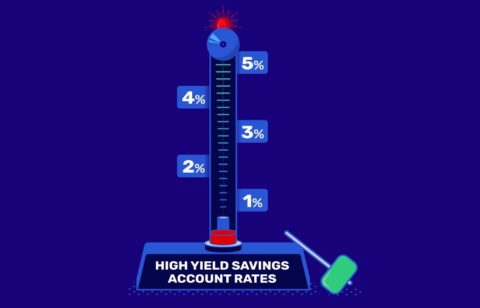According to the SEC, the objective of a 529 account is to “encourage saving for future education costs.” A 529 Savings Account could offer a tax-advantaged pathway for educational expenses, to ease the burden of the ever-escalating costs of higher education. But a recent study by T. Rowe Price and WalletPath found something surprising: Only one-third of parents are actually using them. Let’s break down what 529s are and why they might be worth checking out.
College Savings: Filling the Knowledge Gap
Everyone wants to see their kids succeed, and for many, that includes a college education. However, the costs can be scary for many people. In a 2022 Student Voice survey of 2,000 students by Inside Higher Ed and College Pulse, “two-thirds of students said they would be worried about needing to drop out of college if a financial setback such as a large car-repair bill arose, with more than half of these students reporting they would be ‘very worried.’”
So, why aren’t more families using 529 Savings Accounts to save for college? It may be because many people don’t know what they are.
Studies have shown that only 32% of people could correctly identify a 529 plan as an option for saving for college. This makes sense, because 529 plans are still relatively new. They’ve only had full tax-advantaged status for the past 15 years.
Demystifying 529 Savings Accounts
A 529 Savings Account might sound mysterious, but it’s actually quite versatile! Unlike some investment accounts, 529s offer an array of options for your money, from mutual funds and stocks to even cash and money market funds.
You could think of it like a flexible savings plan specifically for education. Contributions are made with after-tax dollars, but withdrawals for qualified educational expenses are tax-free, similar to a Roth IRA.
Most 529 plans have low or no minimum balances and allow contributions as small as $25 a month. That means you could start saving early, even with limited funds, and watch your college savings grow over time.
State-Specific 529 Plans: Navigating Your Options
Contrary to popular belief, you may not be limited to your home state’s 529 plan. Nearly every state offers its own plan, providing various options for your college savings goals.
While 529 plans can typically be used for qualified education expenses nationwide, your home state might offer unique incentives that make their plan particularly attractive. These perks can include:
- Tax deductions for contributions: Some states may allow you to reduce your taxable income by contributing to your state’s plan.
- Matching contributions: Some states might match a portion of your contributions.
- Scholarship opportunities: Certain states tie might scholarships or grant programs to their 529 plans.
Explore your state’s 529 plan to see if it offers any valuable benefits. Remember, even if you choose a different plan, you probably still have the flexibility to use any 529 plan for qualified education expenses, which could include tuition, fees, and even room and board.
Consider shopping around and comparing different plans to find the one that best aligns with your needs and financial goals.
529 Plans: Adapting to Your Changing Needs
Life throws curveballs, and sometimes your child’s educational plans might change course. Perhaps they decide on a different path after high school, or maybe their college expenses end up being lower than expected. No worries! 529 plans could offer flexibility in these situations.
Here’s the good news: you may be able to change the beneficiary of a 529 account without tax penalties. This could mean you might be able to redirect the funds to another child’s education, or even back to yourself, for qualified education expenses.
This flexibility could help ensure your savings can still be used for educational purposes, even if the original plan changes. So, you can save with confidence, knowing options may be available your circumstances change.
Addressing Concerns and Embracing the Future
Many parents struggle with the perception of needing a large sum of money to start saving for college. This often leads them to use regular savings accounts and could mean missing out on the tax benefits and long-term growth potential of 529 plans. It’s crucial to increase awareness and financial education on the accessibility and advantages of your options and these plans.
Remember, even small contributions can add up over time, thanks to the power of compounding interest. Many 529 plans may offer low or no minimum contributions and even allow automatic transfers, making it easier to fit college savings into your budget, regardless of income.
Now, let’s talk about the bigger picture. The cost of college tends to outpace inflation, making it essential to plan strategically for your child’s future. The College Board’s latest report shows annual tuition and fees ranging from $10,560 to a staggering $37,650, depending on the institution. With costs rising year after year, starting early with a 529 plan could make a significant impact on your child’s future educational opportunities. Don’t miss out on this valuable tool – start exploring your 529 options today!







